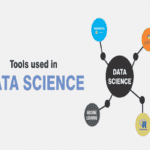Summary: Struggling to translate data into clear stories? Tableau can help! This data visualization tool empowers Data Analysts with drag-and-drop simplicity, interactive dashboards, and a wide range of visualizations. By leveraging Tableau for Data Analyst can boost efficiency, communicate clearly, uncover hidden patterns, and make data-driven decisions. Mastering Tableau elevates an analyst’s value and unlocks career opportunities.
What are The Benefits of Learning Tableau for Data Analysts?
The ever-growing tide of data continues to reshape the business landscape, demanding a new breed of professionals – the Data Analysts.
These data detectives delve into the vast ocean of information, collecting, cleaning, and analyzing it to uncover hidden gems of knowledge.
Their ultimate goal? To transform raw data into actionable insights that illuminate the path towards informed decision-making. Enters: Tableau for Data Analyst.
Tableau, a visual analytics platform that acts as a translator, transforming complex datasets into clear, compelling narratives. By incorporating Tableau into their skillset, Data Analysts unlock a treasure trove of benefits, from enhanced efficiency and deeper data exploration to clearer communication and demonstrably improved decision-making.
This newfound proficiency not only empowers them to become true data storytellers but also elevates their value within their organizations, placing them at the forefront of data-driven success.
Here it is important to mention that Tableau for Data Science is eaully significant. You can read more about it here:
https://www.pickl.ai/blog/importance-of-tableau-for-data-science/
Let’s dig deeper and explore the multifaceted advantages of Tableau for Data Analysts, equipping them to navigate the ever-expanding world of data with unparalleled clarity and purpose.
Who are Data Analysts and What Do They Do?
Data Analysts are the information detectives of the business world. They wade through vast amounts of data, uncovering trends, patterns, and relationships that might otherwise go unnoticed. Their tasks encompass:
Data Collection and Extraction
Identify relevant data sources and gather data from various internal and external systems Extract, transform, and load data into a centralized data warehouse or analytics platform
Data Cleaning and Preparation
Cleanse and standardize data to ensure accuracy, consistency, and completeness. Perform data transformations, such as merging, filtering, and aggregating data
Data Analysis and Modeling
Analyze data using statistical techniques, data mining, and predictive modeling. Develop data models and algorithms to uncover insights and patterns in the data
Reporting and Visualization
Create dashboards, reports, and visualizations to effectively communicate data-driven insights. Interpret data and present findings to stakeholders in a clear and actionable manner
Business Insights and Recommendations
Translate data insights into actionable recommendations to support business decision-making Collaborate with cross-functional teams to understand business objectives and challenges
Continuous Improvement
Monitor data quality and identify opportunities for process improvements Stay up-to-date with the latest data analysis tools, techniques, and industry trends
Data Governance and Security
They ensure data is managed and stored securely, adhering to data privacy and compliance regulations. Data Analyst also maintain data lineage and documentation to enhance data transparency and auditability
Tableau: Unveiling the Magic Behind the Data
Tableau is a visual analytics platform that empowers Data Analysts to transform data into interactive, easy-to-understand visualizations. Here’s a glimpse into its key features:
Here are some of the key features of Tableau that make it so beneficial for Data Analysts:
Drag-and-Drop Interface
Tableau boasts an intuitive interface that allows users to create visualizations with a simple drag-and-drop functionality. This eliminates the need for coding, making it accessible to a wider range of Data Analysts, regardless of their technical background.
Data Blending
One of the powerful aspects of Tableau is its ability to seamlessly combine data from multiple sources. This is particularly useful when analyzing data that is spread across different databases, spreadsheets, or cloud applications. By blending data, analysts can gain a more holistic view of their information and uncover insights that might be missed by looking at individual data sources in isolation.
Interactive Dashboards
Static reports can be limiting. Tableau shines with its ability to create dynamic dashboards. These dashboards allow users to interact with the data in real-time by filtering, drilling down, and pivoting information. This interactivity fosters deeper exploration and a more comprehensive understanding of the data.
Wide Range of Visualizations
Data storytelling is all about choosing the right chart to convey your message effectively. Tableau offers a vast library of visualizations, from classic bar charts and pie charts to more advanced options like heatmaps and scatter plots. Tableau empowers Data Analysts to choose the most appropriate visual format to best represent their data and tell their data story.
Collaboration
In today’s collaborative work environments, the ability to share insights efficiently is crucial. Tableau for Data Analysts facilitates collaboration by allowing users to share and discuss dashboards with colleagues. This fosters teamwork and ensures everyone is on the same page when it comes to data-driven decision-making.
Security and Governance
For organizations dealing with sensitive data, security is paramount. Tableau offers robust security features such as user permissions, data encryption, and audit trails. This ensures that data is only accessible to authorized users and that all activity is tracked for compliance purposes.
Mobile Capabilities
Data needs to be accessible anytime, anywhere. Recognizing this, Tableau offers mobile apps that allow users to view and interact with dashboards on their smartphones and tablets. This empowers Data Analysts to stay informed and make data-driven decisions on the go.
These key features make Tableau a powerful tool for Data Analysts. By leveraging these features, Data Analysts can transform raw data into actionable insights, driving informed decision-making and organizational success.
How Does Tableau Benefit Data Analysts?
By incorporating Tableau into their toolkit, Data Analysts unlock a treasure trove of benefits:
Boosted Efficiency
Tableau automates many tedious data manipulation tasks, like sorting, filtering, and pivoting. This frees up valuable time for Data Analysts to focus on what truly matters – uncovering insights and crafting compelling data stories.
Crystal-Clear Communication
Complex data can be a barrier to understanding. Tableau bridges this gap by transforming numbers into interactive visualizations – charts, graphs, maps, etc. – that are easy to grasp for both technical and non-technical audiences. This fosters clear communication and ensures everyone is on the same page.
Unveiling Hidden Patterns
Tableau’s interactive dashboards are a game-changer. Data Analysts can slice and dice data in real-time, allowing for deeper exploration and the discovery of hidden trends and patterns that might remain invisible in static reports. This empowers them to unearth valuable insights that would otherwise go unnoticed.
Data-Driven Decisions
Tableau empowers Data Analysts to present information in a clear, actionable format. Decision-makers can easily understand the story the data tells, leading to more informed and confident choices. This fosters a data-driven culture within organizations.
Elevated Value
In today’s data-centric world, proficiency in Tableau is a highly sought-after skill. By mastering this powerful tool, Data Analysts become even more valuable assets within their organizations. They position themselves as key players in driving data-driven success, unlocking a world of career opportunities.
Frequently Asked Questions
Does Tableau Improve Efficiency for Data Analysts?
Yes, Tableau is a powerful tool that helps a Data Analyst to improve their efficiency. It automates data manipulation tasks, freeing up time for analysis and storytelling.
How Does Tableau Enhance Communication for Data Analysts?
Tableau transforms complex data into interactive visualizations, making insights easy to understand for everyone.
Can Tableau Help Analysts Discover Hidden Patterns?
Yes! Interactive dashboards allow analysts to explore data in real-time, uncovering hidden trends that might go unnoticed in static reports.
Why is Data-driven Decision Making Important for Tableau Users?
Tableau empowers analysts to present data clearly, enabling stakeholders to make informed and confident choices.
Does Tableau Expertise Benefit an Analyst’s Career?
Proficiency in Tableau is a highly sought-after skill. Mastering this tool elevates an analyst’s value within organizations and opens doors to new career opportunities.
Conclusion
In an age where data reigns supreme, Tableau has become an essential tool for Data Analysts. Its user-friendly interface, powerful features, and ability to create clear and insightful visualizations empower Data Analysts to transform raw numbers into actionable knowledge.
By leveraging Tableau’s capabilities, Data Analysts can become true data storytellers, driving informed decision-making and propelling businesses forward.
If you are interested in learning more about Tableau for Data Analyst or Python for Data Science, enroll for the Data Science and Data Analytics Course on Pickl.AI. With this course, you will learn about Python, Tableau, Power BI, Matplolib and more. This course prepares you for the future.
Want to know more about the Data Science Courses by Pickl.AI, connect with us today.












